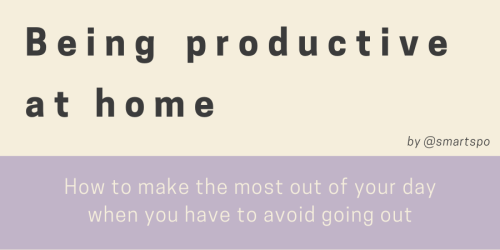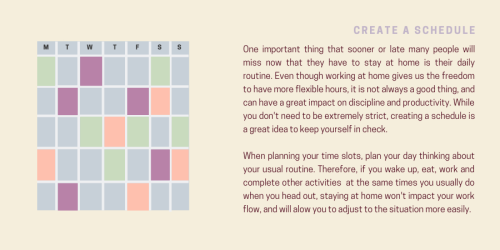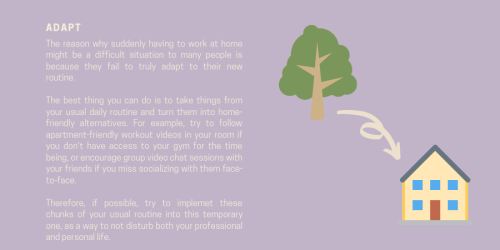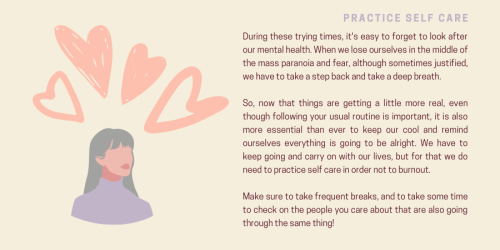1. Mindmaps - Terms Are Placed In Bubbles On A Piece Of Paper With Arrows Drawn Between Them To Show

1. Mindmaps - Terms are placed in bubbles on a piece of paper with arrows drawn between them to show how terms are connected.
Good at helping you see relationships between ideas.
Cause you to define a term, then see how it relates to a broader picture.
Can help you see cause and effect, dissimilarities and similarities, and how different ideas interact.
Maybe not good for learning what terms mean.
Particularly useful for essay exams, policy, history, social sciences, and literature.
2. Venn Diagrams - Two circles overlap, with the overlapping section being for writing similarities and the other two sections being for writing contrasts.
Good at helping you differentiate between ideas.
Maybe not good for comparing more than three ideas at the same time.
Particularly useful for essay exams or if you are confused about two similar terms.
3. Time Lines - A line is drawn and labeled with a unit of time (year, point in the book, etc), and events are added above the time they occurred.
Good at helping you place events in relative order.
Maybe not good if you need to define events as well (there may not be enough space to do so).
Particularly useful for exams that require you to memorize relative order, history, and literature.
4. Flashcards - A card has a term on one side and a definition on the other.
Good at helping you memorize short bytes of information.
Maybe not good for learning complex concepts or connecting concepts.
Particularly useful for learning vocabulary, foreign languages, and English.
5. Vocab lists - A piece of paper has terms written in one column. Next to the terms are their respective definitions in another column. The paper is then folded and used as a memory tool.
Similar to flashcards, but it is easier to see the differences between terms.
Disadvantaged in that the order you see the terms is not random.
6. Step-by-Step How-To Guides - Write how to do a problem step by step. Optionally, include an example to the side that shows each step.
Good at helping you learn how to do methodical problems.
Maybe not good for learning the reason why you do the steps you do.
Particularly useful for math and science.
7. Rewriting Notes - This is not simply making it prettier but reworking the wording so that it is in your own voice.
Good at helping you review concepts thoroughly.
Maybe not good if you are on a time crunch or find yourself not thinking through each word you’re writing.
Particularly useful for classes with a lot of details.
8. Summarizing Notes - Going through your notes and condensing the ideas.
Good at helping you see the main idea/big picture/key facts.
Maybe not good if you want to see the relationships between ideas or if the ideas are very complex.
Particularly useful for cramming.
9. Teaching Someone Else - Tutor someone else, give a presentation to your friends or family, or simply voice your thoughts out loud to a pet or stuffed animal.
Good at helping you understand concepts.
Maybe not good if you don’t know anything at all.
Particularly useful for all classes!
10. Rereading - Rereading notes and diagrams.
Good at helping you review very quickly.
Maybe not good for memorizing or learning concepts.
Particularly useful for skimming right before a test.
More Posts from Lokarprincipal and Others
É isso aí.
Free Online Language Courses

Here is a masterpost of MOOCs (massive open online courses) that are available, archived, or starting soon. I think they will help those that like to learn with a teacher or with videos. You can always check the audit course or no certificate option so that you can learn for free.
American Sign Language
ASL University
Sign Language Structure, Learning, and Change
Arabic
Arabic Without Walls
Madinah Arabic
Moroccan Arabic
Armenian
Depi Hayk
Bengali
Learn Bangla (Register to see course)
Catalan
Parla.Cat
Speak Cat
Chinese (Mandarin)
Beginner
Chinese for Beginners
Chinese Characters for Beginners
Chinese for HSK 1
Chinese for HSK 2
Chinese for HSK 3 I & II
Chinese for HSK 4
Chinese for HSK 5
Mandarin Chinese Level I
Mandarin Chinese Essentials
Mandarin Chinese for Business
More Chinese for Beginners
Start Talking Mandarin Chinese
UT Gateway to Chinese
Intermediate
Intermediate Business Chinese
Intermediate Chinese Grammar
Mandarin for Intermediate Learners I
Dutch
Introduction to Dutch
English
Online Courses here
Resources Here
Faroese
Faroese Course
Finnish
A Taste of Finnish
French
Beginner
AP French Language and Culture
Elementary French I & II
Français Interactif
Vivre en France - A1
Vivre en France- A2
Intermediate & Advanced
French Intermediate course B1-B2
Passe-Partout
Travailler en France A2-B1
Vivre en France - B1
German
Beginner
Deutsch im Blick
German Project
German at Work
Goethe Institute
Gwich’in
Introduction to Gwich’in Language
Hebrew
Biblical Hebrew
UT Austin
Hindi
A Door into Hindi
Virtual Hindi
Icelandic
Icelandic 1-5
Indonesian
Learn Indonesian
Irish
Irish 101, 102, 103, 104, 105, 106, 107
Italian
Beginner
Beginner’s Italian I
Introduction to Italian
Intermediate & Advanced
AP Italian Language and Culture
Intermediate Italian I
Advanced Italian I
Japanese
Genki
Japanese JOSHU
Japanese Pronunciation
Marugoto Courses
Tufs JpLang
Korean
Beginner
First Step Korean
How to Study Korean
Introduction to Korean
Learn to Speak Korean
Pathway to Spoken Korean
Intermediate
Intermediate Korean
Norwegian
Introduction to Norwegian I, Norwegian II
Norwegian on the Web
Persian
Easy Persian
PersianDee
Polish
Online Course
Portuguese
Pluralidades em Português Brasileiro
Russian
Beginner
A1 Course
I speak Russian
Intermediate
B1 Course
B1+ Course
B2.1 Course
B2.2 Course
Spanish
Beginner
AP Spanish Language & Culture
Basic Spanish I, Spanish II
Spanish for beginners
Spanish for Beginners 1, 2, 3, 4, 5, 6
Spanish Vocabulary
Advanced
Corrección, Estilo y Variaciones
Leer a Macondo
Swahili
Online Course
Turkish
Online Course
Ukrainian
Read Ukrainian
Speak Ukrainian
Welsh
Beginner’s Welsh
Discovering Wales
Yoruba
Yorùbá Yé Mi
Multiple Languages
Ancient Languages
More Language Learning Resources & Websites!
Last updated: May 2019

Ric Baxter
Here’s an interesting set of facts.
After the Japanese decimated our fleet in Pearl Harbor Dec 7, 1941, they could have sent their troop ships and carriers directly to California to finish what they started. The prediction from our Chief of Staff was we would not be able to stop a massive invasion until they reached the Mississippi River. Remember, we had a 2 million man army and war ships in other localities, so why did they not invade? After the war, the remaining Japanese generals and admirals were asked that question. Their answer….they know that almost every home had guns and the Americans knew how to use them. 1. The world’s largest army … America ’s hunters! I had never thought about this…. 2. A blogger added up the deer license sales in just a handful of states and arrived at a striking conclusion: 3. There were over 600,000 hunters this season in the state of Wisconsin . 4. Allow me to restate that number. 5. Over the last several months, Wisconsin ’s hunters became the eighth largest army in the world. 6. More men under arms than in Iran . 7. More than in France and Germany combined. 8. These men deployed to the woods of a single American state to hunt with firearms, and no one was killed. 9. That number pales in comparison to the 750,000 who hunted the woods of Pennsylvania and Michigan ’s 700,000 hunters, 10. All of whom have now returned home. 11. Toss in a quarter million hunters in West Virginia and it literally establishes the fact that 12. The hunters of those four states alone would comprise the largest army in the world. The number of Hunters in the state of Texas would be the largest standing army in the world by it’s self. 13. The point? 14. America will forever be safe from foreign & ( domestic ) invasion with that kind of home-grown firepower. 15. Hunting – it’s not just a way to fill the freezer. It’s a matter of national security. 16. That’s why all enemies, foreign and domestic, want to see us disarmed. 17. Food for thought when next we consider gun control.
Why Carry a Gun?
Constitution of United States of America 1789 (rev. 1992)
A well regulated Militia, being necessary to the security of a free State, the right of the people to keep and bear Arms, shall not be infringed.
My old Grandpa said to me, ‘Son, there comes a time in every man’s life when he stops bustin’ knuckles and starts bustin’ caps and usually it’s when he becomes too old to take a whoopin’.’
I don’t carry a gun to kill people; I carry a gun to keep from being killed.
I don’t carry a gun because I’m evil; I carry a gun because I have lived long enough to see the evil in the World.
I don’t carry a gun because I hate the government; I carry a gun because I understand the limitations of government.
I don’t carry a gun because I’m angry; I carry a gun so that I don’t have to spend the rest of my life hating myself for failing to be prepared.
I don’t carry a gun because I want to shoot someone; I carry a gun because I want to die at a ripe old age in my bed and not on a sidewalk somewhere tomorrow afternoon.
I don’t carry a gun to make me feel like a man; I carry a gun because men know how to take care of themselves and the ones they love.
I don’t carry a gun because I feel inadequate; I carry a gun because unarmed and facing three armed thugs, I am inadequate.
I don’t carry a gun because I love it; I carry a gun because I love life and the people who make it meaningful to me.
Police protection is an oxymoron: Free citizens must protect themselves because police do not protect you from crime; they just investigate the crime after it happens and then call someone in to clean up the mess.
Personally, I carry a gun because I’m too young to die and too old to take a whoopin’! ———————–
A LITTLE GUN HISTORY
PLEASE DON’T THINK FOR A MOMENT, THAT THIS COULDN’T HAPPEN IN OUR COUNTRY ALSO !!!!!!
In 1911, Turkey established gun control:
· From 1915 to 1917, 1.5 million Armenians, unable to defend themselves, were rounded up and exterminated. ———————–
In 1929, the Soviet Union established gun control:
· From 1929 to 1953, about 20 million dissidents, unable to defend themselves, were rounded up and exterminated. ———————–
In 1938 Germany established gun control:
. From 1939 to 1945, a total of 13 million Jews and others who were unable to defend themselves were rounded up and exterminated. ———————–
China established gun control in 1935:
. From 1948 to 1952, 20 million political dissidents, unable to defend themselves, were rounded up and exterminated. ———————–
Cambodia established gun control in 1956:
. From 1975 to 1977, one million educated people, unable to defend themselves, were rounded up and exterminated. ———————–
Guatemala established gun control in 1964:
· From 1964 to 1981, 100,000 Mayan Indians, unable to defend themselves, were rounded up and exterminated. ———————–
Uganda established gun control in 1970:
· From 1971 to 1979, 300,000 Christians, unable to defend themselves, were rounded up and exterminated. ———————–
56 million defenseless people were rounded up and exterminated in the 20th Century because of gun control. ———————–
You won’t see this data on the US evening news, or hear politicians disseminating this information.
*Guns in the hands of honest citizens save lives and property and, yes, gun-control laws adversely affect ONLY the law-abiding citizens.
With guns, we are ‘citizens’; without them, we are ‘subjects’.
During WW II, the Japanese decided not to invade America because they knew most Americans were ARMED!
Gun owners in the USA are the largest armed forces in the World! If you value your freedom, please spread this anti-gun control message to all of your friends.
The purpose of fighting is to win. There is no possible victory in defense.
The sword is more important than the shield and skill is more important than either.
· SWITZERLAND ISSUES A GUN TO EVERY HOUSEHOLD! SWITZERLAND’S GOVERNMENT ISSUES AND TRAINS EVERY ADULT IN THE USE OF A RIFLE.
· SWITZERLAND HAS THE LOWEST GUN RELATED CRIME RATE OF ANY CIVILIZED COUNTRY IN THE WORLD!!!
· IT’S A NO BRAINER! DON’T LET OUR GOVERNMENT WASTE MILLIONS OF OUR TAX DOLLARS IN AN EFFORT TO MAKE ALL LAW-ABIDING CITIZENS AN EASY TARGET.
· I’m a firm believer in the 2nd Amendment! If you are too, please forward this. If you’re not a believer, please reconsider the true facts. This is history; and if we do not want history to repeat itself, we must wake up.
Jianshu by beautiful Sun Linya 😍
Ótimo Karate.
Técnica perfecta
Brilhante 🌞
📹 IG : ohataku0716
Very good. Funny.

Slinky boy
(via)
So cute.
Baby elephant taking their first steps
(via)

Bem pensado.





in the past, i had to prepare for several exams by self-studying for long hours at home, so over the years i’ve learned the best ways to adapt to this situation, which i now present in this little infographic. i hope it can ease some of the pressure! 💜
studygram
-
 summersheen liked this · 1 year ago
summersheen liked this · 1 year ago -
 anisotropic liked this · 1 year ago
anisotropic liked this · 1 year ago -
 giveupghosts liked this · 2 years ago
giveupghosts liked this · 2 years ago -
 maia-radfemdu liked this · 2 years ago
maia-radfemdu liked this · 2 years ago -
 theaterm liked this · 2 years ago
theaterm liked this · 2 years ago -
 natt2112 reblogged this · 2 years ago
natt2112 reblogged this · 2 years ago -
 natt2112 liked this · 2 years ago
natt2112 liked this · 2 years ago -
 yakhuli liked this · 2 years ago
yakhuli liked this · 2 years ago -
 caelextilupus liked this · 3 years ago
caelextilupus liked this · 3 years ago -
 kaziq liked this · 3 years ago
kaziq liked this · 3 years ago -
 autismood liked this · 3 years ago
autismood liked this · 3 years ago -
 mfreedomstuff liked this · 3 years ago
mfreedomstuff liked this · 3 years ago -
 nonbinaryidiot reblogged this · 3 years ago
nonbinaryidiot reblogged this · 3 years ago -
 nonbinaryidiot liked this · 3 years ago
nonbinaryidiot liked this · 3 years ago -
 medeagf reblogged this · 3 years ago
medeagf reblogged this · 3 years ago